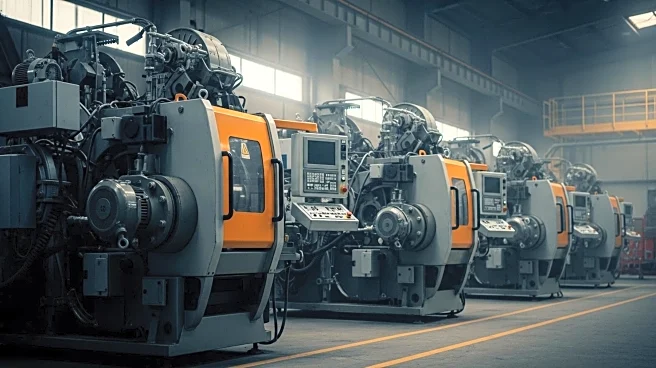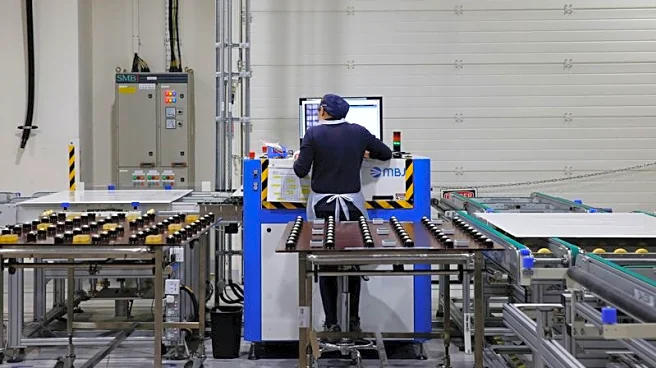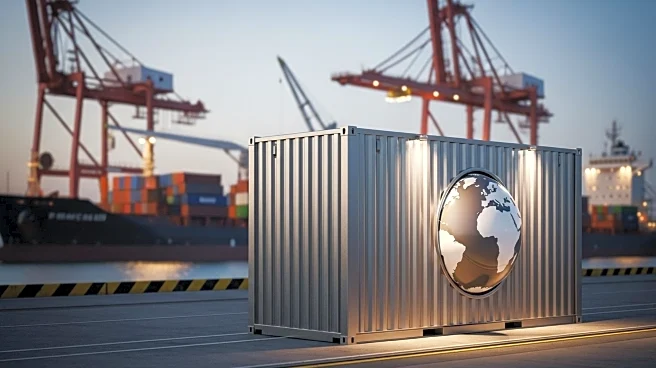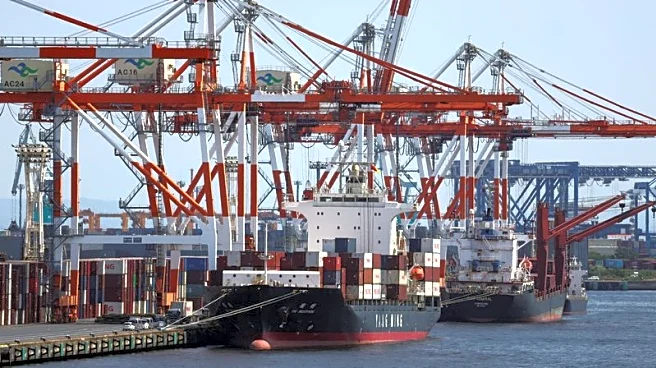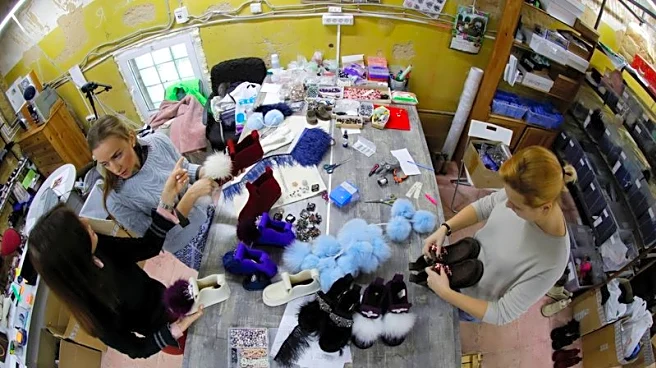What's Happening?
Philippine factory activity experienced a slowdown in August due to a modest rise in demand, as reported by S&P Global. The country's Purchasing Managers' Index (PMI) was recorded at 50.8, slightly down from July's 50.9, indicating a subdued performance. The manufacturing sector faced uncertainties, including higher US tariffs on trading partners, which affected Filipino producers. Despite these challenges, there was a seasonal boost from pre-Christmas demand, and foreign demand reached a seven-month high. However, factories halted hiring activity, leading to a buildup of backlogs.
Why It's Important?
The stagnation in factory activity reflects broader economic challenges faced by the Philippines, including global trade tensions and tariff impacts. The manufacturing sector's health is crucial for economic growth, and the subdued demand could affect employment and production levels. The situation underscores the interconnectedness of global markets and the potential ripple effects of policy changes, such as tariffs, on international trade and local economies.
What's Next?
Philippine manufacturers may need to adapt to the changing economic landscape by exploring new markets or adjusting pricing strategies to remain competitive. The government and industry leaders might consider policy measures to support the manufacturing sector and mitigate the impact of external economic pressures. Monitoring global trade developments and their implications for local industries will be essential for future planning.
